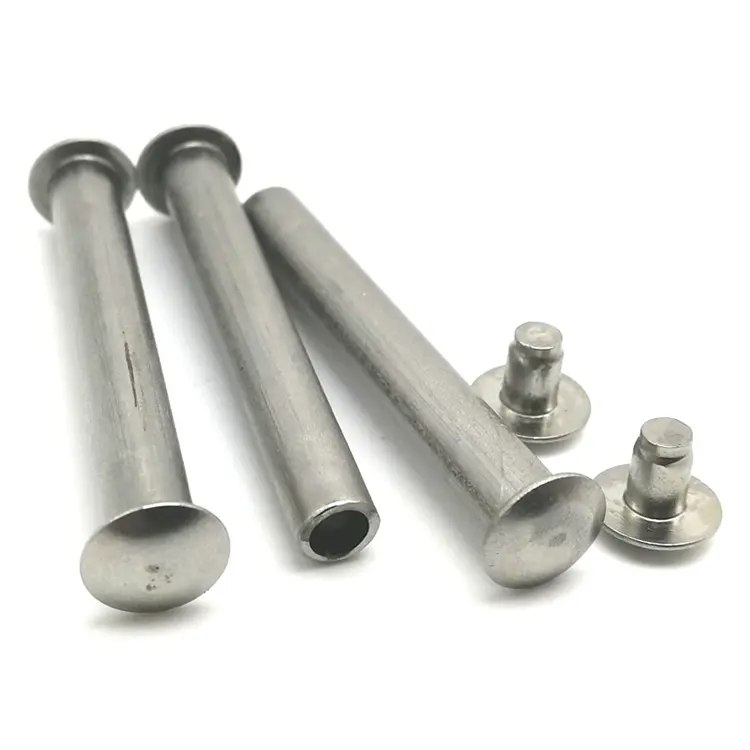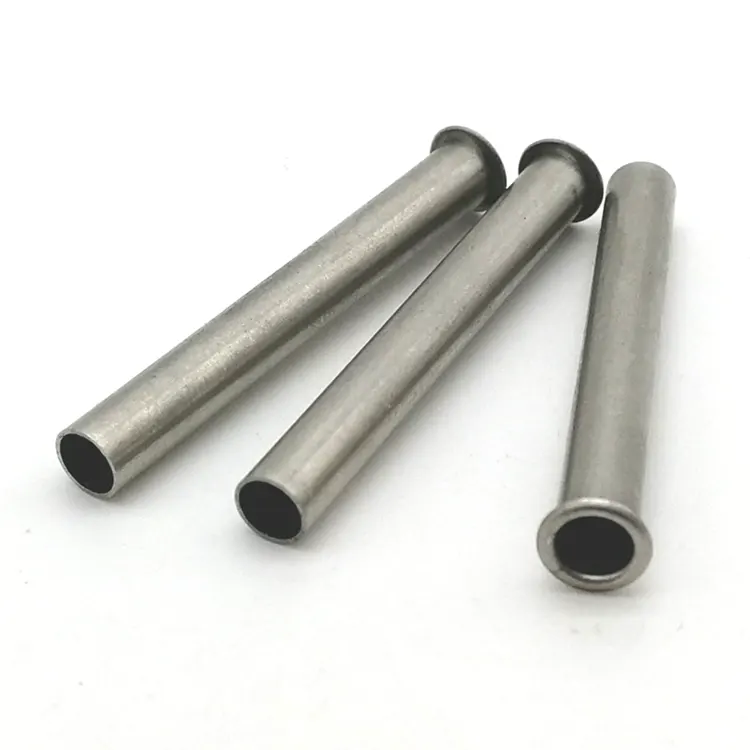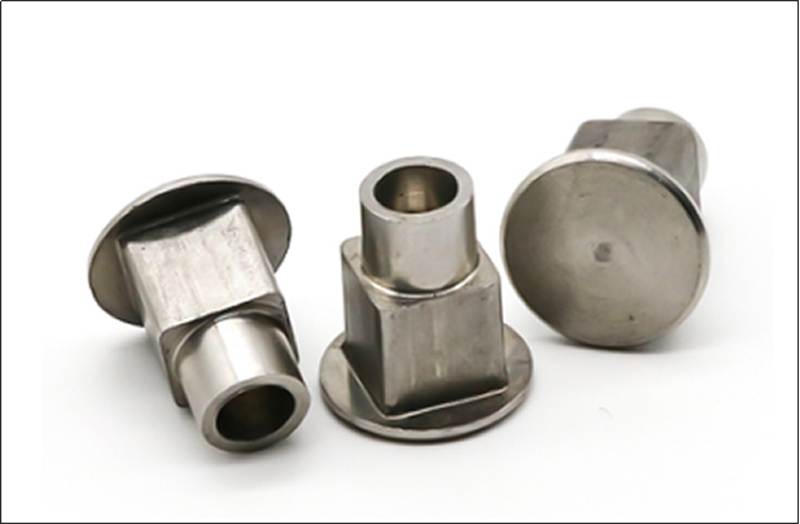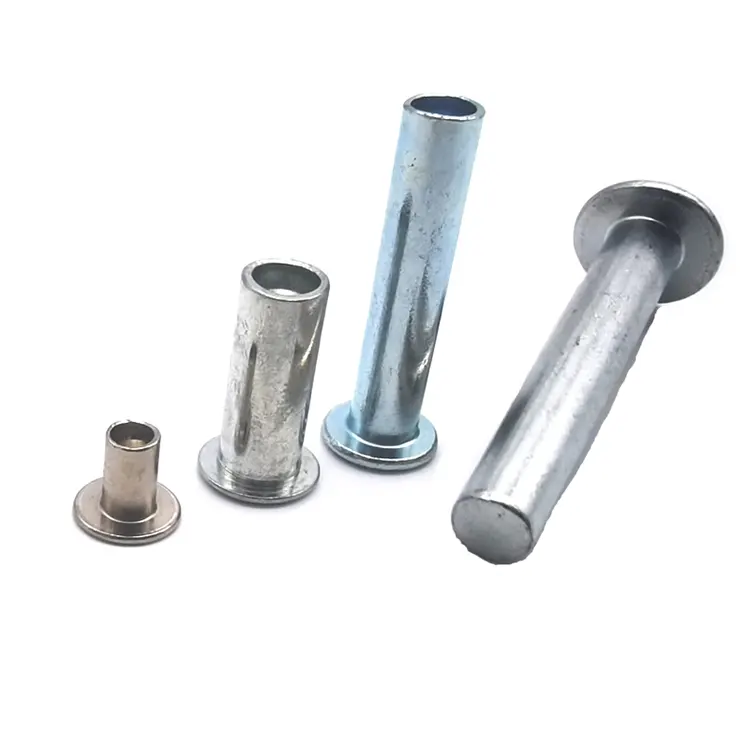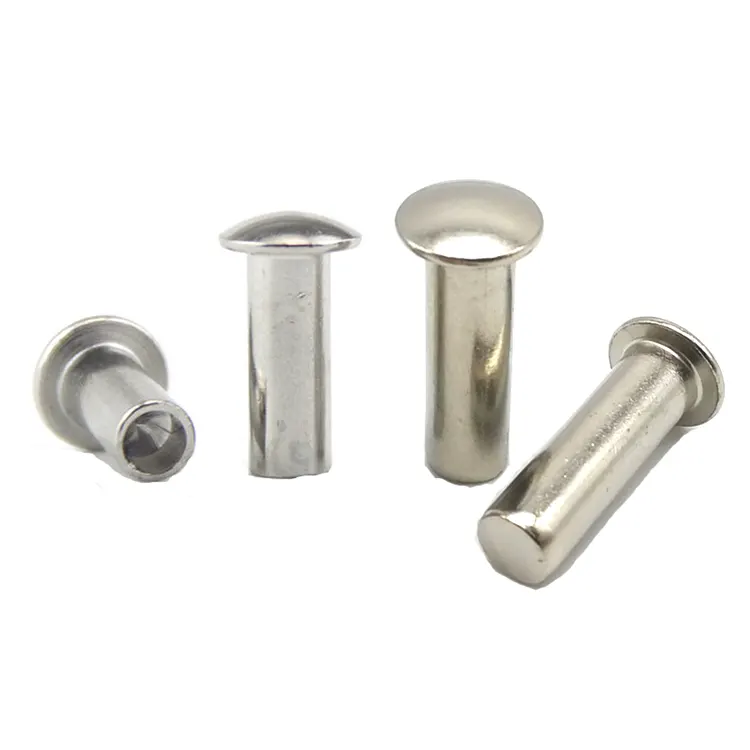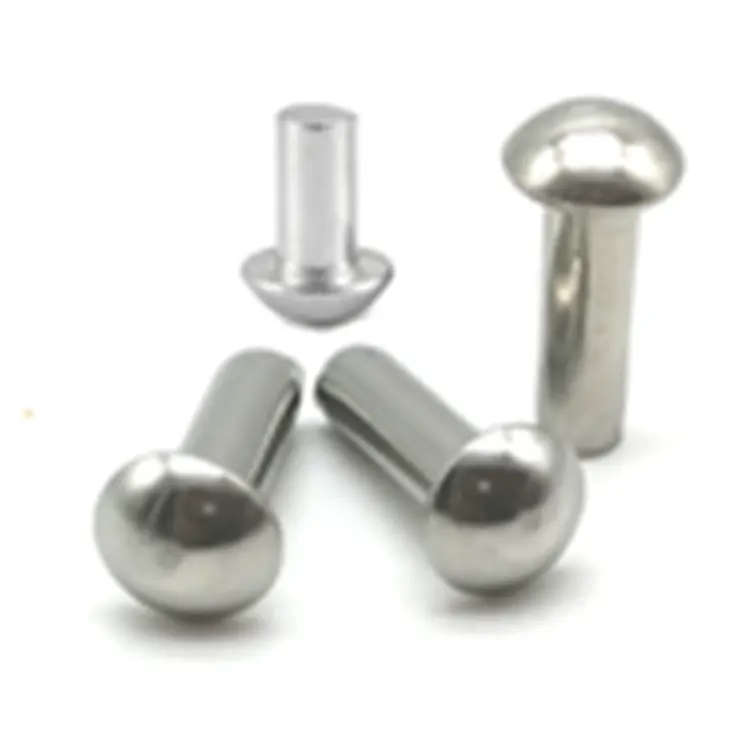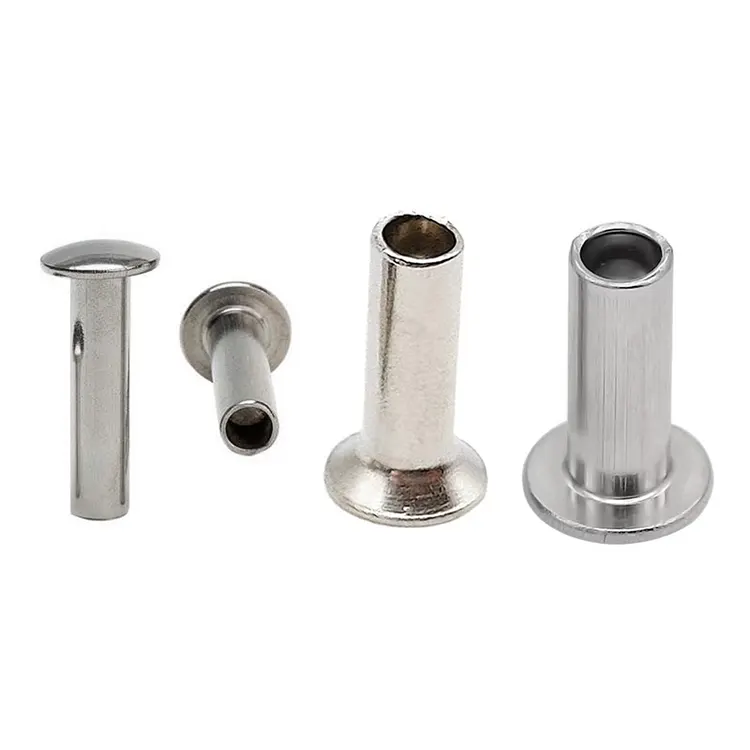Erikoisjuhlat
One of Chinese manufacturer of Special Rivets, offering excellent quality at a competitive price, is Notin. Feel free to get in touch.
In the field of mechanical manufacturing and assembly, rivets are a common fastener used to professionally connect two or more parts. According to the degree of standardization, rivets can be divided into two categories: standard rivets and non-standard rivets. The size, shape and material of standard rivets are uniformly specified, while non-standard rivets are customized according to specific needs. The following will introduce the characteristics and applications of non-standard rivets from multiple aspects.
What are non-standard rivets?
Non-standard rivets are also called special rivets. They refer to rivets that do not meet national standards or industry general standards. Their size, material, structure and other parameters are designed and manufactured according to the specific needs of customers. Due to the different connection requirements of different industries and equipment, standard rivets may not meet the requirements of certain special scenarios, so non-standard rivets came into being.
What are the characteristics of special rivets?
(1) Strong customization: Non-standard rivets can be personalized according to factors such as the use environment, stress conditions, and assembly methods to ensure that they perform well in actual applications.
(2) Diverse materials: In addition to common carbon steel and stainless steel, non-standard rivets can also be made of special materials such as aluminum alloy, copper alloy, titanium alloy, etc. to meet different corrosion resistance, strength and weight requirements.
(3) Flexible structure: The structure of non-standard rivets can be adjusted according to needs, such as head shape, stem diameter, length, etc., and can even be designed to be hollow, semi-hollow or other special shapes.
- View as
Rautaiset niitit
Rautaiset niitit, tunnetaan myös nimellähiiliteräksiset niitit, ovat tyypillisesti hiiliteräksestä valmistettuja kiinnikkeitä, joissa on pintakäsittelyjä, kuten galvanointi. Niiden vetolujuus on 400-500 MPa ja ne soveltuvat sovelluksiin, kuten sähkölaitteisiin. Erilaisten niittaussovelluksien sopimiseksi rautaiset niitit valmistetaan tyypillisesti puolionttoina tai kiinteinä niiteinä. Rautaniitit ovat perustavanlaatuinen mutta ratkaiseva mekaaninen komponentti, jota käytetään laajalti niiden lujuuden, kohtuuhintaisuuden ja helppokäyttöisyyden vuoksi.
Lue lisääLähetä kyselyRautapään niitit
Rautapään niiteistä on kevyin, korroosionkestäviä ja esteettisesti miellyttäviä ominaisuuksiaan tullut teollisen valmistuksen monipuolisia yleislaitteita. Olipa kyseessä painokriittiset sovellukset tai arkielämä, rautapään niitit tarjoavat poikkeuksellisen suorituskyvyn ja luotettavuuden. Tervetuloa Nuote Metalsiin Dongguaniin, Kiinaan, näiden niittien asiantuntija. Tarjoamme korkealaatuisia tuotteita toimitustakuulla. Valmistamme myös muita laitteistotarvikkeita, kuten silmukoita, koneistettuja osia ja meistettyjä osia.
Lue lisääLähetä kyselyRautasienipään niitit
Nuote Metals on ammattimainen niittivalmistaja, joka sijaitsee Dongguanissa, Kiinassa. Rautasienipään niiteissämme, kuten nimestä voi päätellä, on sienen muotoinen pää, jossa on joko puoliontto tai kiinteä ydin. Pää on tyypillisesti suurempi, mikä tarjoaa hyvän tukipinnan. Tämä rakenne mahdollistaa muodonmuutoksen asennuksen aikana joko suulakepuristuksen tai erikoistyökalujen avulla kahden tai useamman materiaalin lujasti yhdistämiseksi. Ne on valmistettu raudasta, ja ne on tyypillisesti galvanoitu tai käsitelty muilla korroosionkestävillä pinnoitteilla.
Lue lisääLähetä kyselyRautaiset litteät niitit
Yleisenä mekaanisena liittimenä rautaiset litteät niitit ovat tärkeässä asemassa useilla teollisuuden aloilla suunnitteluominaisuuksiensa ja laajan käyttöalueensa ansiosta. Rakenteellisesti niitin pää on litteä, kiekon muotoinen ja runko on lieriömäinen. Pää on erityisesti käsitelty järkyttävän rakenteen muodostamiseksi. Asennuksen jälkeen paine tai isku saa rungon laajenemaan muodostaen mekaanisen kosketuksen reiän seinämän kanssa kiristävän vaikutuksen saavuttamiseksi. Verrattuna pyöreäpäisiin niiteihin tai upotettuihin niitteihin, litteän pään rakenteessa on merkittäviä etuja voiman jakautumisessa ja kosketuspinnassa. Esimerkiksi, kun se altistetaan leikkausvoimalle, sen kiekon muotoinen pää voi hajottaa kuorman suuremmalle alueelle, mikä vähentää tehokkaasti pinta-alayksikkökohtaista painetta.
Lue lisääLähetä kyselyRautaiset upotetut niitit
Raudasta upotetun pään niitin pää on muodoltaan katkaistu kartio, jossa kartio on tyypillisesti 90° tai 120° kulmassa niitin akseliin nähden. Tämän muodon ansiosta niitin pää voi istua samassa tasossa liitetyn komponentin pinnan kanssa asennuksen jälkeen, jolloin ulkonäkö on sileä. Tämä sopii erityisen hyvin sovelluksiin, joissa pinnan tasaisuus on kriittinen. Tule Nuote Metalsiin räätälöimään haluamasi rautainen upotettu niitti. Insinöörimme yli 10 vuoden kokemuksella tuntevat syvästi erilaisten niittityyppien valmistuksen.
Lue lisääLähetä kyselyPuoliputkimaiset niitit
Puoliputkimainen niitti on metallikiinnike, joka on kiinteä toisessa päässä ja osittain ontto toisessa, yleensä valmistettu materiaaleista, kuten alumiiniseoksesta, kuparista tai teräksestä. Ontto osa vie noin kolmanneksen - puolet niitin rungon pituudesta. Tämän rakenteen ansiosta niitti voi saavuttaa kiinnitysvaikutuksen ekstruusiomuodonmuutoksen kautta asennuksen aikana. Verrattunakiinteät niitit, puoliputkimaisille niiteille on ominaista kevyt paino, helppo asennus ja laaja käyttömahdollisuus; täysontoihin niitteihin verrattuna ne tarjoavat suuremman lujuuden ja vakauden. Puoliputkimaiset niitit eivät vaadi monimutkaisia laitteita asennuksen aikana, ja ne voidaan yleensä täydentää manuaalisilla tai pneumaattisilla työkaluilla. Siksi niitä suositaan monilla aloilla. Nuote Metals on erikoistunut puoliputkimaisten niittien valmistukseen täydellisellä muottivalikoimalla ja toivottaa räätälöinnin tervetulleeksi.
Lue lisääLähetä kyselyWhat are the characteristics of special rivets?
(1) Strong customization: Non-standard rivets can be personalized according to factors such as the use environment, stress conditions, and assembly methods to ensure that they perform well in actual applications.
(2) Diverse materials: In addition to common carbon steel and stainless steel, non-standard rivets can also be made of special materials such as aluminum alloy, copper alloy, titanium alloy, etc. to meet different corrosion resistance, strength and weight requirements.
(3) Flexible structure: The structure of non-standard rivets can be adjusted according to needs, such as head shape, stem diameter, length, etc., and can even be designed to be hollow, semi-hollow or other special shapes.
Manufacturing process of special rivets
The manufacturing of non-standard rivets involves multiple links, mainly including:
1.Material selection: Select suitable metal or alloy materials according to the use environment. 2. 2.Cold heading or hot heading: Use pressure processing to form the basic shape of the rivet into the metal blank.
3.Turning or milling: Fine-process the details such as the head and stem of the rivet to ensure dimensional accuracy.
4.Surface treatment: Such as galvanizing, nickel plating, anodizing, etc. to improve corrosion resistance or aesthetics.
Advantages and limitations of special rivets
(1) Advantages: They can meet special needs, improve assembly efficiency and connection reliability, and are suitable for complex or high-demand application scenarios.
(2) Limitations: Since they are customized products, the production cost is high, the delivery cycle is relatively long, and customers are required to provide detailed technical parameters.
How to choose suitable special rivets?
(1) Clarify the needs: Determine the key parameters such as the rivet's operating environment, stress conditions, and corrosion resistance requirements.
(2) Material matching: Select the appropriate material based on actual needs to avoid over-design that leads to increased costs.
(3) Communicate with suppliers: Provide detailed technical drawings or samples to ensure that the non-standard rivets produced meet expectations.
What are the main applications of special rivets?
(1) Aerospace: Aircraft, rockets and other equipment have extremely high requirements for the weight, strength and high-temperature resistance of fasteners. Non-standard rivets can be optimized according to specific needs.
(2) Automobile manufacturing: Certain special models or high-performance vehicles may require non-standard rivets to meet the needs of lightweight or high-strength connections.
(3) Electronic equipment: Precision instruments or small electronic equipment may require micro non-standard rivets to ensure the stability and compactness of the connection.
(4) Construction industry: Some special-structured buildings or decoration projects may use non-standard rivets to meet specific installation requirements.
Market status of special rivets
With the advancement of industrial technology, more and more industries have begun to use non-standard rivets to optimize product design. At present, non-standard rivet manufacturers are mainly concentrated in the Yangtze River Delta and Pearl River Delta regions in China, and can provide a variety of customized services. Due to the high unit price of non-standard rivets, its market size is relatively small, but the demand in the high-end manufacturing field continues to grow.
Future development trends
(1) Lightweight design: With the improvement of energy-saving and environmental protection requirements, non-standard rivets made of lightweight materials will be more popular.
(2) Intelligent production: Automated equipment and digital management will further improve the production efficiency and quality stability of non-standard rivets.
(3) Wider application: Emerging industries such as new energy and robotics may drive the growth of demand for non-standard rivets.
In summary, special rivets are highly customized fasteners that can meet special needs that standard rivets cannot meet. Although its production cost is relatively high, it plays an irreplaceable role in industries such as aerospace, automobiles, and electronics. In the future, with the advancement of manufacturing technology, the application scope of non-standard rivets is expected to further expand.

